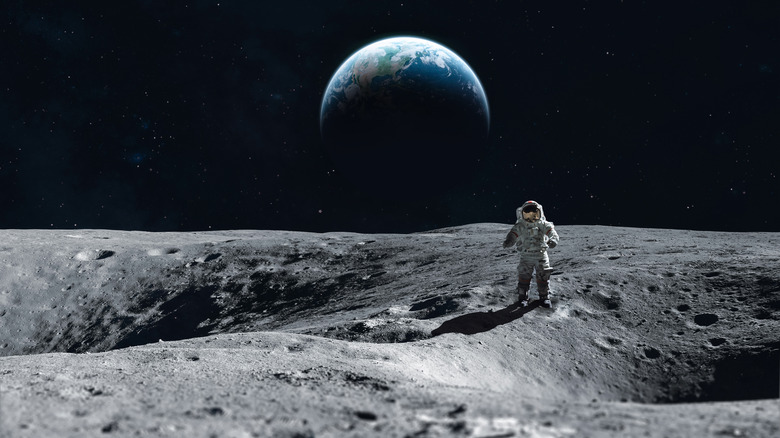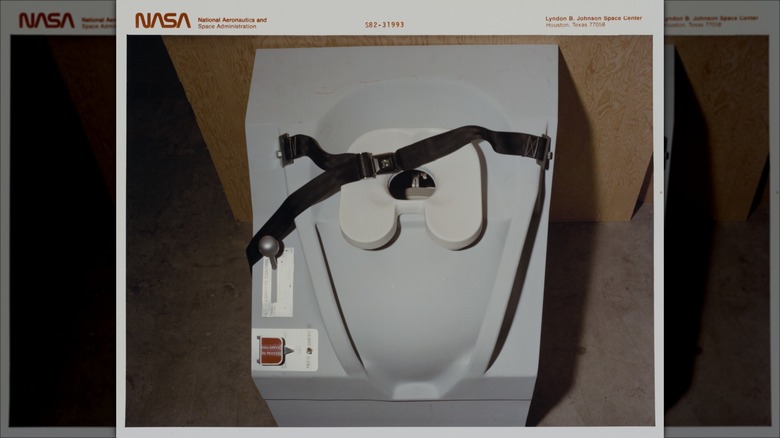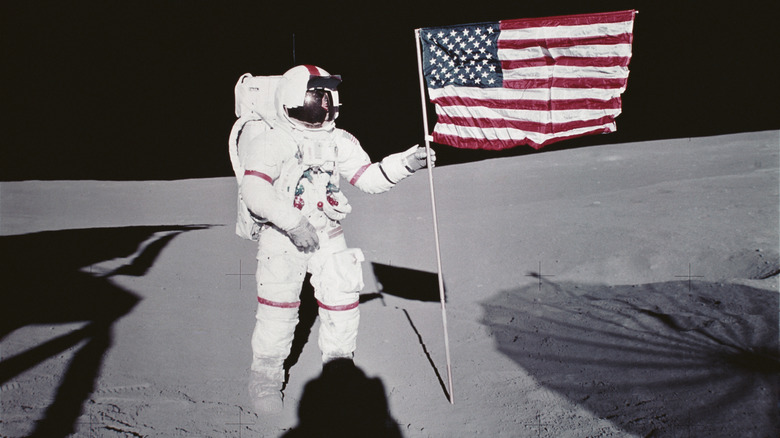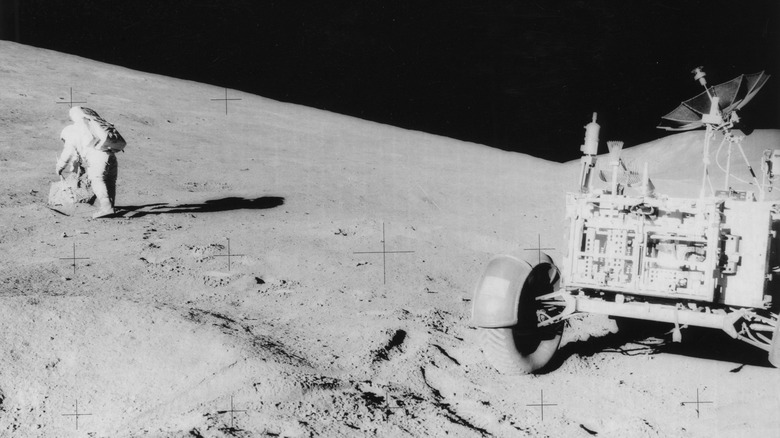Why Astronauts Left Poop On The Moon
You might imagine that if you were lucky enough to travel through space, it would be an utterly life-changing experience. The sensation of weightlessness would completely alter your sense of your own body and the forces that have acted upon it since the moment you were born, while the sight of the Earth as nothing but a blue and green bauble out of the shuttle window which miraculously contains every single human in existence — except for you and your crew. But as real-life astronauts have made clear, there are also plenty of pressing issues on board a spacecraft that remain reverie-shatteringly prosaic. Scratching your nose inside your helmet requires a solution, for example — rather elegantly, astronauts had a square of Velcro attached to the inside of the glass which they can rub their nose on — while at the height of the space race, both NASA and the Soviet Union decided to abandon the humble pencil for safer zero-gravity pens developed by the Fisher Space Pen Company.
And, of course, there is the small issue of body fluids. Well, actually, it has proved to be a big issue, with plenty of brainpower put into developing the most efficient, safe, and comfortable ways for astronauts to micturate and defecate in zero gravity. But while it may seem reasonable to assume that human waste could be jettisoned into space after flushing, in most cases the material is either retained on the craft or, in the case of lunar journeys, left on the moon. That's right: to this day, there are parcels of astronaut poop up there, left behind for the good of the mission.
The complicated physics of pooping in space
You might have seen footage of astronauts in zero gravity, chasing globules of liquid around the cabin. Thankfully, in such instances, the liquid is drinking water. Since the early days of long-distance space travel, most space vessels have incorporated vacuum toilets, though the first designs reportedly left a lot to be desired in terms of comfort. As described by The University of Buffalo, Apollo astronauts were made to pee standing up, while they had to strap themselves to the commode to poop, with their waste collected in a bag at the other side. But this wasn't always effective in terms of hygiene.
As the years passed, NASA decided to invest millions in the development of more suitable toilet facilities. "The intent is to build a commode that requires less crew time, improved cleanliness, and a 75% reduction in volume and weight compared to the previous US ISS/Extended Duration Orbitor WCS developed in the 1990s," states a report published by NASA in 2013. The project reportedly cost in the region of $23 million.
A special delivery
Some may argue that leaving debris on the moon, that immaculate orb which until 1969 was unsullied by human interference, is an act of interplanetary vandalism. But it is arguable that such earthling detritus was left in the pursuit of scientific knowledge. Weight is an important factor in any space voyage, which played into the Apollo mission's decision to leave human waste behind on the moon. As well as achieving touchdown on the surface of the moon, NASA's Apollo astronauts were charged with collecting samples of moon rock, the makeup of which was still a mystery in the early days of space exploration, and bringing them back to Earth for scientific study.
And the fine margins involved in calculating how to achieve a safe take-off and propulsion thereafter led NASA to abandon a fair amount of material in favor of the precious lunar cargo. As the BBC's Science Focus notes, left behind after the Apollo missions was a great deal of equipment, including cameras, numerous pairs of boots, a telescope, and golf balls — presumably those famously struck by Alan Shepard on the 1971 Apollo 14 mission – as they explored zero-gravity on the lunar surface. And among the jetsam was a combined 96 bags of bodily waste. Meanwhile, The Atlantic reports that there are currently upwards of 70 abandoned spacecraft on the surface of the moon, such as rovers and lunar modules.
Why scientists are now interested in astronaut poop
The idea that there is a pile of astronaut poop sitting somewhere on the lunar surface has, of course, generated plenty of attention online. Many commenters, of course, find the concept of vacuum-packed frozen space poop humorous, while others are outraged at the idea that we have left the moon sullied after multiple missions which are widely held to represent the summit of all human achievement.
But while headlines such as Vox's "Apollo astronauts left their poop on the moon. We gotta go back for that s***" may suggest that Earthlings have a duty to clean up after themselves, there is in fact a renewed scientific interest in what our spacemen left behind on the lunar surface all those years ago. Per the article, NASA is now planning on recovering the human waste the agency left behind over half a century ago, to study how the microbes in the poop have reacted to spending decades on the surface of the moon.
Though the surface of the moon is a far harsher environment than Earth and most of the bacteria contained in the poop would likely have long since died and disintegrated, some scientists argue that the microbes may very well have adapted to the conditions and survived, allowing humanity to study the evolution of extraterrestrial life in progress.



